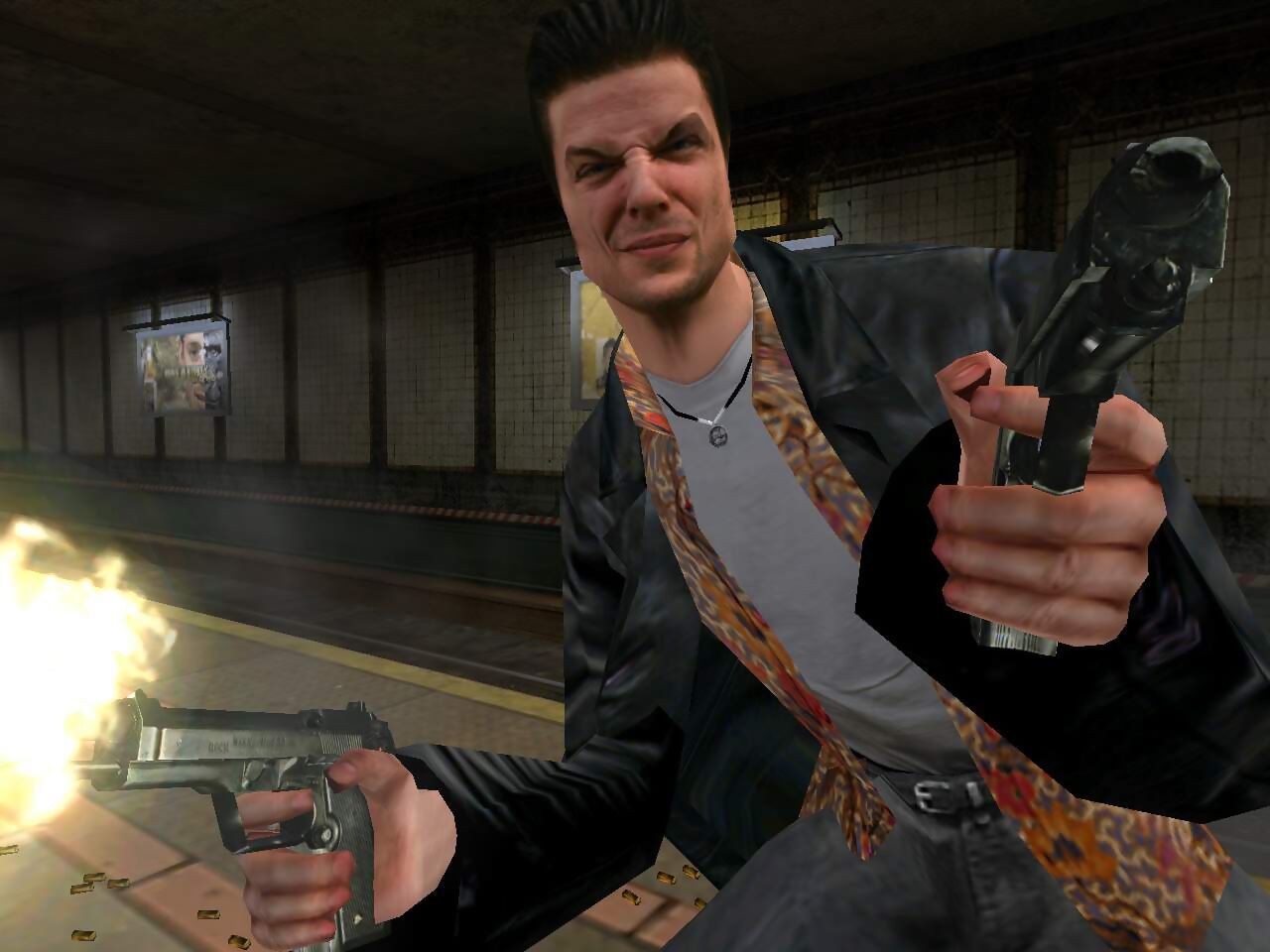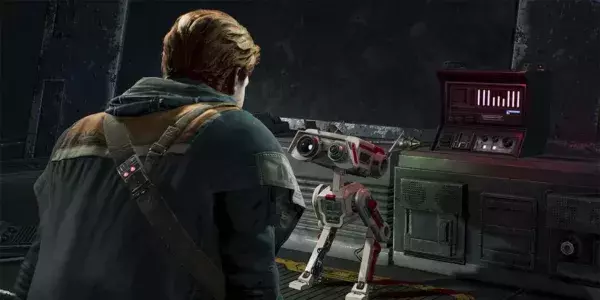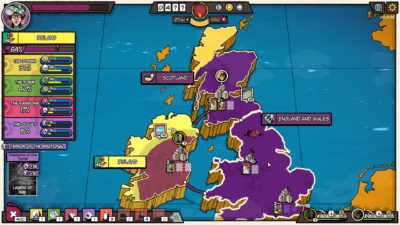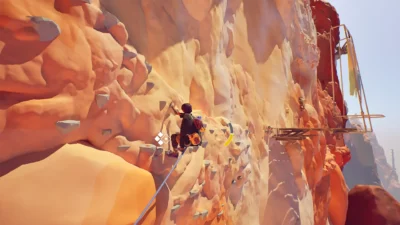
Max Payne, with its iconic bullet-time and hard-boiled comic aesthetic, was one of 2001’s biggest games. Apogee’s Scott Miller discusses the classic shooter’s development.
These days, Remedy Entertainment is best known for Alan Wake and Control, but the studio’s first major success was 2001’s ultra-noir third-person shooter, Max Payne. At this stage Remedy, had only released one game (1996’s Death Rally) so it made sense that they sought some when shifting from quirky top-down racing to a fully 3D narrative-driven experience that would introduce one of gaming’s archetypal mechanics.
That help came from Max Payne’s publisher, Apogee. Set up by Scott Miller – who by 1996 had already been making games for 21 years – along with partner, George Broussard, Apogee and its sub-label 3D Realms are synonymous with Duke Nukem, but have been involved in a huge number of games.
Here, Miller – who served as Max Payne’s producer – explains how Remedy and Apogee came to work together.
Scott Miller: “It started when current Remedy CEO, Markus Maki, visited Apogee’s offices in 1995. He showed us some demos that his friends were working on back in Finland, and myself and my partner George Broussard were super impressed, especially by a little top down racing game prototype that was called Hi-Speed.
So, Apogee signed that game, and I renamed it to Death Rally. During the eight or so months on that game we really came to like each other as companies working together. During development about five or six of the Remedy team (most of the studio at that time) visited us in Dallas and we all went to the Texas State Fair and spent several days playing each other in multiplayer games of Death Rally, DOOM and Rise of the Triad. So after Death Rally released it was a no-brainer to want to work together again.
I asked Remedy to come up with a few ideas for their next project, and in a few months they visited Dallas again to pitch their ideas. One was a racing game, and I pretty much immediately shot that down. They also had a pitch for a space combat game, called Void. It was a good pitch, but I was more interested in their third idea, and that was a gritty detective game that they called Dark Justice.
Crazily, they had the idea of making all three games simultaneously. I talked them into doing just two games, Void and Dark Justice, and then a month later convinced them to focus on the game I wanted to pursue the most, Dark Justice. I also convinced Remedy to make the game a full 3D game, like Tomb Raider, with a third-person viewpoint. They agreed. I don’t remember if they had a playable [demo] of the top-down version, maybe just the most basic, one-area little demo at most. But I knew that top-down was the past, and full 3D was the future, and that was the only version of the game I wanted to be involved with. It didn’t take much to get Remedy to agree, even though we all knew the scope of the game just became significantly bigger. We were shooting for the stars. The final big request I made to the Remedy team was to only use photo-sourced textures in the game, like Apogee was planning to do with Duke Nukem Forever, and Remedy agreed to that, too. With these tentpole items in place, we created an agreement between Remedy and Apogee in which both studios co-owned the Max Payne IP equally and Apogee agreed to fund the development as a recoupable advance.”

Credit: Remedy Entertainment.
Whether planned or not, some games become synonymous with a single moment (BioShock’s twist), with a character (Resident Evil Village’s Lady Dimitrescu), or in Max Payne’s case, with a seminal gameplay mechanic. While you can play Max Payne without ever triggering its slow-motion ‘bullet time’, depriving yourself of those long, luxurious moments where enemy bullets crawl towards the screen but you’re free to aim and fire as normal is to miss out on one of gaming’s greatest pleasures. But – reflecting how videogame development is often about ‘finding the fun’ as you go – rather than building Max Payne around its key feature, bullet-time was a later addition.
Scott Miller: “No one was looking to add a new gameplay feature to the game at that time, and we were already about 15 months into development, but the stars aligned. Another one of my requested features for Max Payne was for actual flying-through-the-air bullets, versus instant travelling bullets like in every other shooter. I sold this idea to Remedy by suggesting we wanted the game’s bullet realism to match its visual realism. I even said to them that if an enemy is off in the distance and running, I wanted the player to have to lead the running enemy by a little, just as you would have to do in real life.
So, they agreed to implement realistic bullet flight in the game. Then, many months later, on one of my visits to their offices in Finland, they were showing me this new enemy death feature in which some enemies, when killed, would die in slow motion while the camera swung around the falling body. It was super [action film director] John Woo like, which is what they were going for, but immediately I knew there was a much bigger prize to be scored! I suggested that this slow motion stuff was far too cool to only use for the deaths of thugs, and that we needed to find a way to implement it as gameplay. That night it occurred to me, and I wrote the idea on a note, and told them the next day: The player needed to be able to activate the slow motion mode as a talent [Max] has, and while the whole world around him moves slow, including his own body, he can still aim fast to shoot bad guys. Remedy implemented it, and it worked superbly. They even added in their own idea of ‘shoot-dodging’, which is when Max can dive horizontally while shooting, a terrific extension of my core idea.
A few months later I had the idea of calling this mode bullet-time, based on the fact that when you used it, you saw bullets slowing down. So I reasoned, the game has two time modes: real-time, and bullet-time. I told my name idea to Remedy and they loved it, so we immediately trademarked it.”

Credit: Remedy Entertainment.
The final element that lifts Max Payne beyond being just a 3rd-person shooter with a fun mechanic is its bleak, so-noir-that-it-borders-on-parody storyline. Presented as a comic featuring photographs of the game’s developers (including both writer Sam Lake’s parents), Max’s hard-boiled narration features some amazing lines. “The sun went down with practised bravado,” is good but can’t top the ridiculously meta, “The feeling of someone controlling my every step. I was in a computer game. Funny as Hell, it was the most horrible thing I could think of.”
So where did the story and the idea of telling it through comic panels, come from?
Scott Miller: “Sam Lake [the pen name of Remedy’s creative director, Sami Järvi] was brought on from the start and began writing the script. I think the full script ended up around 250-300 pages. It was finished within six months of the project starting, and revised all through development of the game. But in general, Sam’s script was the roadmap for the game’s level design.
From Apogee, there were never any changes to the story. We were pretty blown away by everything Sam was doing from the start. I did add a few little lines in there in places, mostly for humour. For example, there’s an elevator that [Max] uses and it has some typical elevator music playing. I suggested to the game’s project leader, Petri Järvilehto, that we add a speaker on the ceiling and if Max shoots it, he breaks the fourth wall and says “Thank you.” But as far as the story goes, we never requested any changes.
[The comic panels were] Remedy’s idea, 100 percent. It was conceived as a way to avoid doing animated cut-scenes to tell these scenes, which would have been much more time consuming and costly. Their solution of doing graphic scenes with voice over and sound effects worked out brilliantly. They get all the credit for thinking of this solution.”

Credit: Remedy Entertainment.
With multiple awards and strong sales, it’s fair to say that Max Payne took the gaming world by a storm (of bullets). It was quickly followed by 2003’s sequel, The Fall of Max Payne. I asked Scott about the game’s impact on the parties involved and whether Apogee’s hands-on assistance was typical for the publisher, or something they only did for Remedy.
Scott Miller: “[Max Payne] was huge for Apogee just the same as Remedy. Given that both companies co-owned the IP, and we split everything 50 / 50, we both did extremely well. And then I worked the deal to sell the IP to Take-Two, which resulted in a huge windfall for both companies.
Apogee and I especially were very involved with Max 2, much the same as with Max 1. That game was made much more quickly, though, and so there wasn’t any time to add innovations to Max 2 – it was more about just continuing Max’s story and deepening the character, and having him go through another traumatising episode of his life.
In terms of working with other developers, to this day we work with third-party studios / developers in the exact same way: Giving them the freedom they desire to make their dream game, and helping them reach that goal in any way we can.”

Credit: Remedy Entertainment.
Wrapping up the Max Payne story, 2008’s movie starring Mark Wahlberg reviewed poorly but made a profit, before Rockstar took over for 2012’s final Max Payne game. Since then, the series has been reduced to easter egg references in Remedy’s games, but with the developer announcing that they’re working on a remake of the first two Max Payne games as a combined title, hopefully it won’t be long before we get to slip back into Max’s trademark leather coat.
Even now, with many games featuring various forms of slow-motion, revisiting Max Payne and bullet-time is to witness a studio understanding that they’ve found their game’s key feature and absolutely nailing it.
Again and again, bullet time delivers that perfect moment where every incoming shot misses you while you take out bad guy after bad guy until the last spins and falls.
Or, as Max would put it, “They were all dead. The final gunshot was an exclamation mark to everything that had led to this point.”
The author would like to thank Scott Miller for giving up his time to answer my questions. You can find Scott on Twitter.





